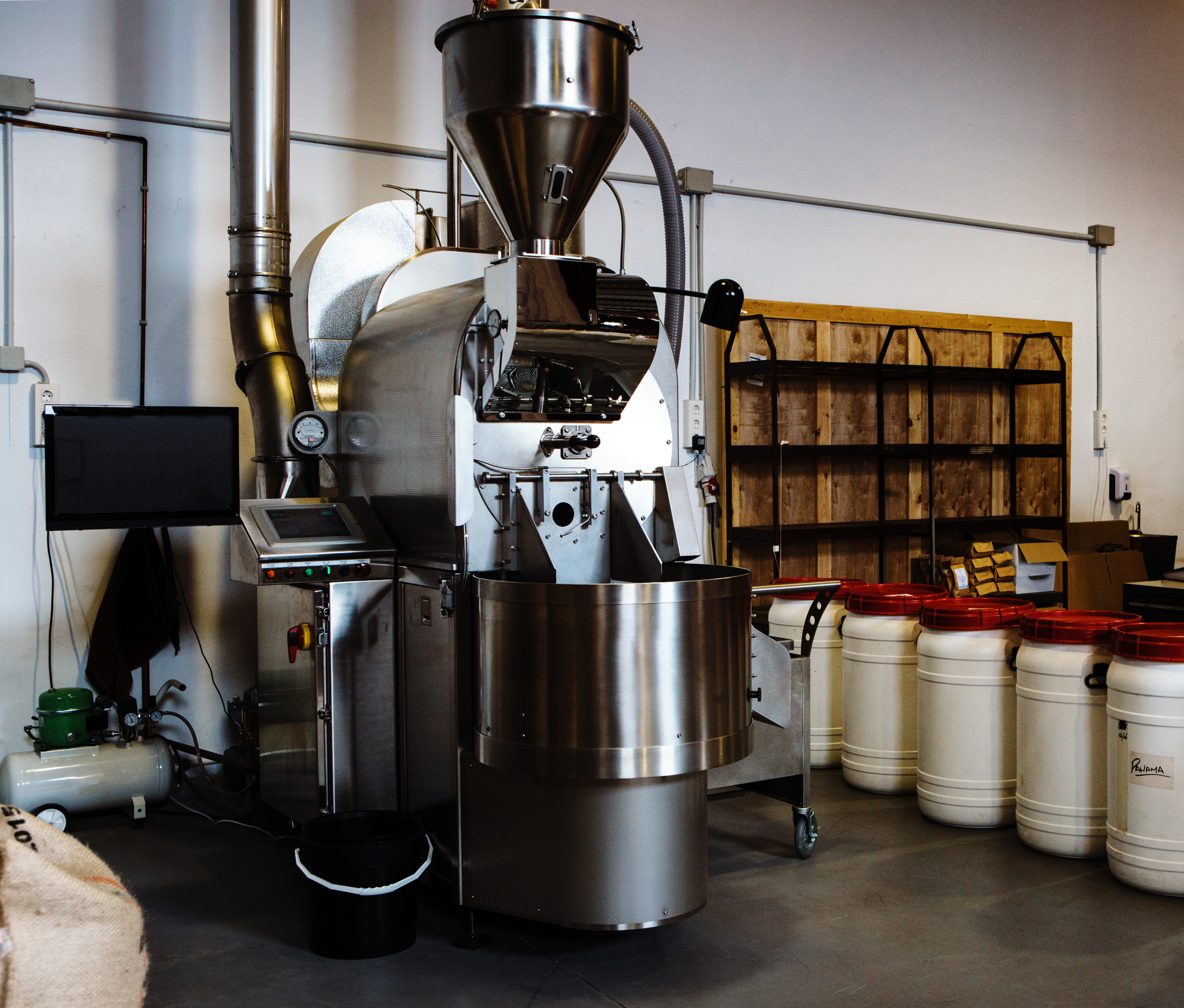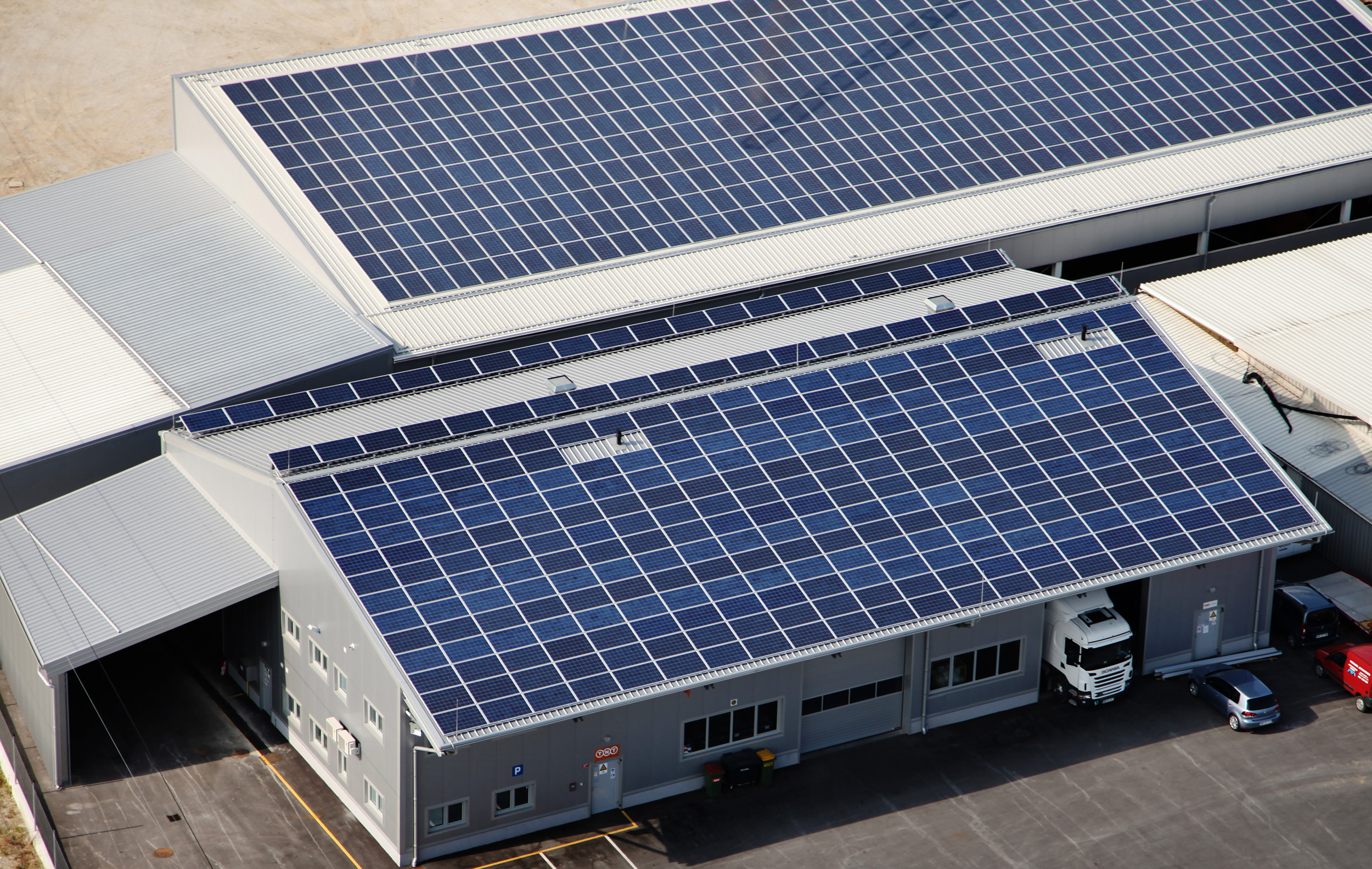After milling, the next major stage in the life cycle of a coffee is roasting. All the life cycle analyses (LCAs) we’ve studied show that the roasting stage contributes very little to the overall greenhouse gas (GHG) emissions from a cup of coffee.
In the LCA app, the preset figure for carbon emissions resulting from roasting is 0.19 kilograms of CO2 per kilogram of green coffee. This value is taken from Killian et al. (2013), who based it on their study of coffee grown in Tanzania (PCF Pilotprojekt Deutschland, 2008). According to their research, roasting accounts for just 2.7% of the total carbon footprint of a cup of coffee.
The research was commissioned by Tchibo for its industrial roasting operations in Germany. The 0.19-kg value can thus be taken to be a reasonable estimate of the GHG emissions related to roasting in a highly optimised industrial process.
Two studies suggest that the GHG emissions of smaller-scale roasting processes may be higher. An analysis of a combined dry mill and roastery in Peru (Franco and Bartl 2018) estimated the GHG emissions from milling and roasting to be 0.89 kg CO2 per kg of green coffee, of which 0.70 kg were from the natural gas used to power the roaster. Another analysis of coffee produced and roasted in Thailand (Phrommarat 2019), estimated the GHG emissions from the gas used to power the roaster at 0.42 kg CO2 per kg of green coffee.
These estimates for GHG emissions at the roastery are much higher than estimates from the industrial roasting process at Tchibo, but they still account for only a small fraction of the overall emissions from a cup of coffee.
Reducing Energy Use at the Roastery
Traditional drum roasting machines are notoriously inefficient, with as much as 75% of the thermal energy being lost via the chimney instead of transferred to the beans (Pantaleo et al 2018). If an afterburner is required to reduce smoke and volatile organic compound (VOC) emissions and comply with local regulations, then even more heat gets wasted. In fact, if it’s not carefully optimised, the afterburner can use more energy than the roaster itself (Bertinotti 2014).
One important way to reduce the environmental impact of roasting the beans, therefore, is to find a way to use all that ‘lost’ heat energy. At its simplest, this could mean using the energy to heat the roastery premises during the winter. This has the potential to save a considerable amount of energy, depending on the business; an analysis of a roastery in Vermont, in the northeastern United States, found that the operation used more gas for heating the building than it did for roasting during winter months (Toland 2015).
Alternatively, a number of roasting machine designs recirculate the heated gases from the exhaust to the inlet, reducing the energy required to heat the incoming air. The best-known examples of this are the roasting machines made by Loring, who claim an 80% reduction in energy use. Loring roasters are energy efficient both because they recirculate roasting gases and because they eliminate the need for a separate afterburner.
 Roasting machines that recirculate the heated exhaust gases, such as this one made by Loring, can significantly reduce the energy used in roasting.
Roasting machines that recirculate the heated exhaust gases, such as this one made by Loring, can significantly reduce the energy used in roasting.
Large industrial roasters have still more sophisticated ways to use that heat energy. One technique pioneered by Probat uses the heat from the exhaust to gently preheat the green coffee while it is in the hopper. As well as reducing the amount of energy needed to roast the coffee, some roasters have found that preheating green coffee helps them achieve better flavour development (Cho 2017).
Waste heat can also be used in absorption coolers; used for air conditioning or to cool the beans more quickly after roasting (De Monte et al 2003); or it can even be used to generate electricity in an organic Rankine Cycle turbine (Pantaleo et al 2018).
The choice of fuel can also affect the emissions related to roasting, since natural gas results in slightly lower emissions than propane (US Energy Information Administration 2020). Another energy source, electricity, is less efficient at heating than gas, and it can’t be used effectively in larger roasting machines. Using electricity to power smaller machines allows for a fully renewable energy source to be used, however.
 The efficiency of solar panels has increased greatly in recent years. Solar energy can be used to power equipment, or even to roast coffee directly.
The efficiency of solar panels has increased greatly in recent years. Solar energy can be used to power equipment, or even to roast coffee directly.
Where the conditions allow, even more emissions can be reduced by the use of solar collectors to roast coffee. In the study in Peru (Franco and Bartl 2018), a conventional roasting plant was compared with a roastery that used solar collectors to roast coffee and solar panels to provide all the company’s electricity. When the carbon emissions of manufacturing the equipment were taken into account, the carbon footprint of the solar-powered roastery was less than half that of the conventional roastery.
